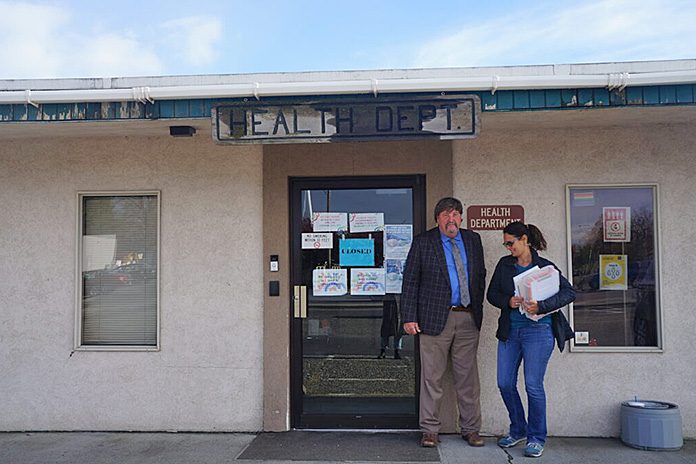
By Alex Baumhardt
It’s been more than two-and-a-half months since Mayra Colin found out the water coming from her kitchen tap in Boardman contained high levels of nitrates, which can cause serious health issues.
She’s still waiting for a permanent fix.
“We’re on the list to have a filter installed in the future,” she said in a text message on Monday. “We have been provided with bottled water and more recently, water jugs weekly.”
For three months, Morrow County officials have been testing the tap water of residents who rely on wells, and more than a month ago, the county commission declared an emergency over the contamination. The county is paying for bottled water deliveries, and a consortium of area businesses is paying for reverse-osmosis filters for homeowners in the area.
The state has provided some help – but no direct money, county officials said.
Jim Doherty, chair of the Morrow County Commission, wants the state to contribute $4 million to expand nitrate testing in the county, pay for reverse osmosis filter systems and help fund the digging of new wells.
That’s how much the state recently gave to Klamath County to subsidize the cost of new wells for homes where they’ve gone dry.
Regional state lawmakers told Doherty to wait until a meeting of the Legislature’s Emergency Board in September when county officials can request funds.
The contaminated water comes from the Lower Umatilla Basin, used by residents in Umatilla and Morrow County. It has become increasingly contaminated with nitrates during the last 30 years from farm fertilizers, animal manure and wastewater from the Port of Morrow and area food processors. Water that contains more than 10 parts of nitrates per million is unsafe to drink, according to the Federal Environmental Protection Agency.
Colin’s water tested more than three times that.
For the complete story, see the Oregon Captial Chronicle’s website.









